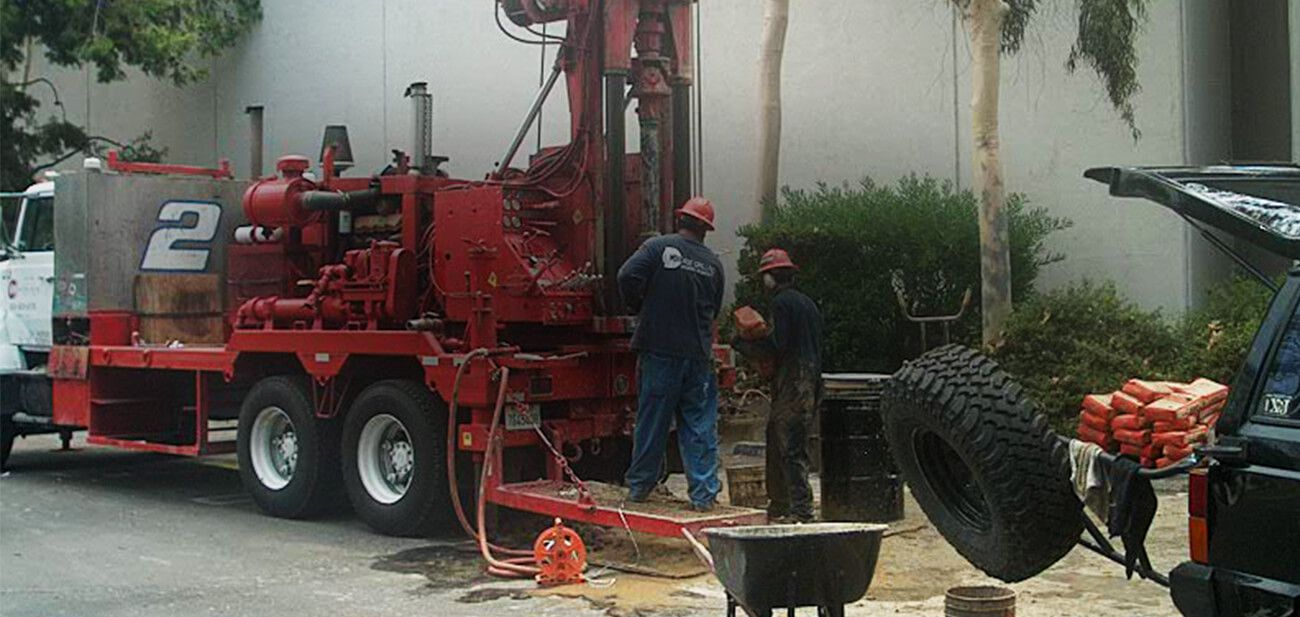Why Geotheta Stands apart in the Field of Geotechnical Engineering
Why Geotheta Stands apart in the Field of Geotechnical Engineering
Blog Article
Browsing Geotechnical Services: The Value of Geotechnical Information, Dirt Compaction Testing, and Pavement Style in Ensuring Structural Integrity
Geotechnical services, including the manufacturing of geotechnical records, performing soil compaction testing, and careful pavement style, offer as the keystone of ensuring structural integrity. geotheta. These vital parts not just lay the foundation for successful task execution but likewise alleviate prospective dangers that might endanger the security and resilience of a building job.
Significance of Geotechnical Reports
Geotechnical reports play a vital function in giving thorough understandings right into the dirt and rock problems of a site, vital for making sure the architectural stability of building jobs. These reports are a fundamental component of the initial website examination process, offering important information that affects the layout, building techniques, and overall usefulness of a task. By assessing dirt composition, security, and potential dangers such as landslides or sinkholes, geotechnical reports make it possible for designers to make educated decisions regarding structure style and construction methods.
Furthermore, geotechnical records aid in threat evaluation and mitigation approaches, assisting task stakeholders comprehend the potential obstacles that may emerge throughout construction. Via complete evaluation and analysis of geotechnical data, designers can create services to resolve site-specific problems, ensuring the long-lasting security and safety of the framework. Eventually, the thorough nature of geotechnical reports functions as an important foundation for effective task planning and implementation, minimizing dangers and boosting overall job outcomes.

Duty of Dirt Compaction Screening
Just how crucial is the assessment of soil compaction through testing for ensuring the security and durability of building and construction tasks? Dirt compaction screening plays a crucial function in the building market by guaranteeing that the soil underneath a framework is appropriately compressed to support the designated load and prevent settlement (geotheta). Properly compressed dirt supplies a stable foundation for structures, roadways, and other structures, lowering the threat of architectural failing and expensive repair work in the future
Soil compaction testing entails gauging the thickness of the dirt and contrasting it to the maximum density achievable for that certain dirt type. This helps engineers determine if the dirt has been compressed adequately to support the planned framework. By conducting dirt compaction tests throughout building and construction, designers can recognize any type of areas that need additional compaction and take rehabilitative steps prior to proceeding with further construction.
Relevance of Pavement Style
Analyzing soil compaction via screening not just ensures the security and long life of building jobs but also lays a critical foundation for reliable sidewalk design. Proper sidewalk style thinks about factors such as traffic lots, environmental problems, soil qualities, and product homes to create a durable and lasting surface. By including information from dirt compaction examinations, engineers can identify the appropriate density, products, and layering for the pavement to endure expected stress and anxieties and maintain architectural honesty over time.
Making Certain Structural Honesty
These records give important information on dirt make-up, security, and possible threats, assisting in educated decision-making throughout the layout and building and construction stages. Furthermore, carrying out detailed dirt compaction screening is vital to make certain that the dirt underneath pavements or foundations is correctly compacted to support the intended lots and stop settlement issues.
Furthermore, implementing durable sidewalk design methods is vital for guaranteeing the architectural honesty of roads, car park, and various other smooth surfaces. Correct sidewalk style considers factors such as website traffic volume, environmental problems, and soil characteristics to develop long lasting and safe transportation framework. By sticking to these practices and making use of geotechnical services effectively, building and construction jobs can enhance their architectural stability, decrease dangers https://geotheta.com of failing, and make certain the long-term efficiency of the built setting.
Securing Versus Dangers
In light of the essential value placed on making sure structural stability via careful interest to product choice and dirt testing, protecting versus risks comes to be extremely important in keeping the security and longevity of building and construction tasks. Risks in building and construction tasks can come from numerous resources, including all-natural calamities, soil instability, or style imperfections. To safeguard against these dangers, thorough danger evaluation procedures need to be executed at every stage of the job. This consists of comprehensive geotechnical investigations to determine possible hazards, such as soil erosion or seismic activity, that might endanger the task's stability.
Moreover, developing backup strategies and applying durable tracking systems can assist mitigate unforeseen risks that might develop during construction. Regular evaluations and quality assurance measures need to be lugged out to make certain that products are utilized according to specifications which building and construction practices follow market criteria. By proactively recognizing and attending to prospective risks, building and construction jobs can boost their durability and minimize the likelihood of architectural failures, ultimately making sure the safety and long life of the developed environment.
Final Thought

Soil compaction screening plays an important role in the construction industry by ensuring that the dirt under a framework is appropriately compressed to prevent and support the intended lots negotiation.Dirt compaction testing includes measuring the density of the dirt and contrasting it to the maximum density achievable for that particular dirt kind (geotheta). By performing dirt compaction tests during building and construction, designers can determine any areas that call for additional compaction and take corrective actions before proceeding with more building
Additionally, performing thorough dirt compaction testing is essential to ensure that the soil under foundations or sidewalks is appropriately compacted to sustain the desired lots and prevent settlement concerns.
In final thought, geotechnical records, soil compaction screening, and pavement layout play crucial duties in guaranteeing the architectural stability of building tasks.
Report this page